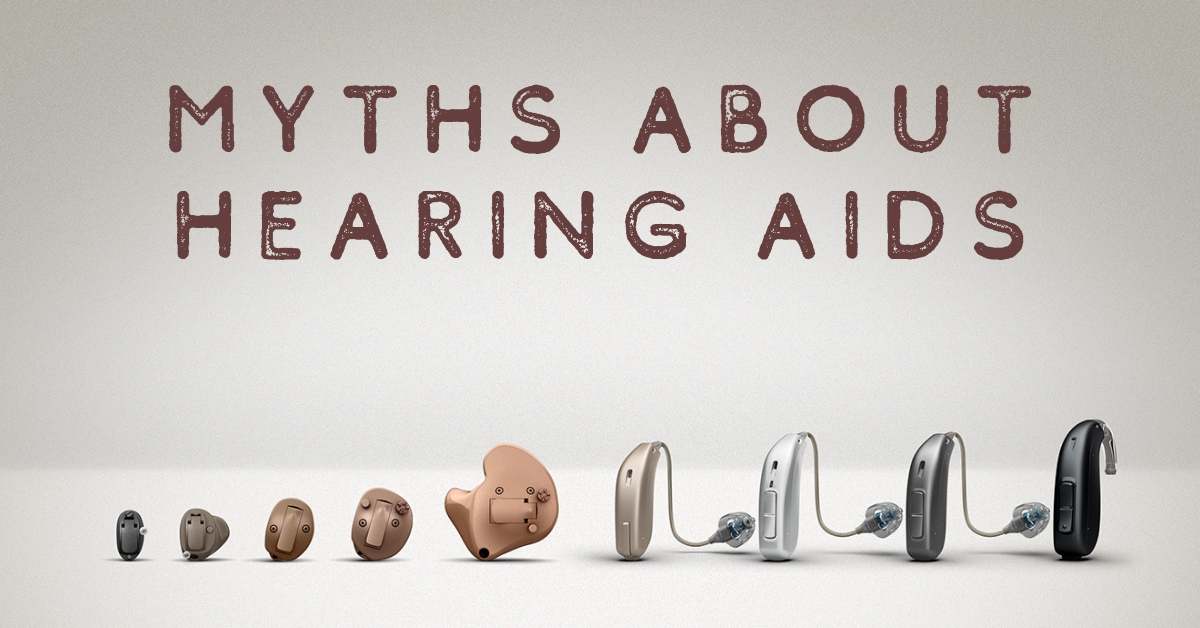Hearing aids have been around for quite some time now, so everyone has some preconceived ideas about these nifty little devices. Gone are the days of the massive machinery sticking out of your ear, but let’s address some of the other common misconceptions about hearing health.
Myth: It’s a “one size fits all” with hearing aids.
There are many types, brands and sizes of hearing aids. Each person has a unique hearing loss, hearing needs, and brain processing, not to mention a personal aesthetic preference. Which hearing aid will work best is a very personal thing. Working with your hearing professional is essential to determine the best device for you.
Myth: Hearing aids are only for old people.
While a hearing loss often develops naturally with age, there are many reasons a loss can start at any age. Ear infections, loud sudden noises and head traumas are among the common culprits and can hit at any time of life. Because of this, many younger people wear hearing aids in their daily lives.
Myth: A mild hearing loss is not bad enough for a hearing aid.
Everyone’s hearing loss and listening needs are different. A loss above 23dB is considered the benchmark to start looking at hearing aids. You can keep living comfortably with a mild hearing loss, but there is a lot you might be missing out on. By working with your audiologist, you can determine if a hearing aid is needed and how much it will improve your hearing. And at Falls of Sound, you can trial hearing aids in your own home to see exactly how much difference they can make.
Myth: Wearing two hearing aids is not necessary.
Naturally, we hear with two ears. Binaural (two-eared) hearing helps us localize sounds, assists us in noisy settings, and provides natural sound quality. In some cases, there is a hearing loss only in one ear, in which case you would only need one hearing aid. However, more often than not, a hearing loss occurs in both ears – even if at different levels – and therefore 2 hearing aids are recommended to fully grasp your surroundings.
Myth: The smallest hearing aids are more sophisticated.
For cosmetic reasons, most people like the idea of a smaller hearing aid but there is no technological improvement in smaller sizes. In fact, in some cases, there is not enough room in the smallest hearing aids for circuits that may be needed for a patient with a stronger hearing loss. Your hearing professional will help sort through the advantages and disadvantages of each type and style.
Myth: A hearing aid will damage your hearing.
A properly fitted and maintained hearing aid will not damage your hearing but might even save you from getting dementia later in life. Moreover, there is evidence that not wearing hearing aids when you have a hearing loss can cause auditory deprivation. This is where the brain starts to lose the ability to process information because of a continued lack of sound stimulation.
Myth: Hearing aid prices are prohibitive.
There is no denying that like with every piece of advanced technology, there is a cost involved with hearing aids. But the figures most of us have in our heads are often far higher than the actual cost of these devices. There are different brands and models of hearing aids and multiple technology levels which offer a wide range of prices. Sometimes a person might not need the top of the range. There are also a number of private health funds which cover some hearing aid costs, as well as a government Hearing Services Program for pensioners. And it’s important of course to remember that hearing aids are a long-term investment. At Falls of Sound, they come inclusive of all your hearing services for 5 years. Your audiologist will also be able to recommend the best devices to suit your lifestyle and budget.

